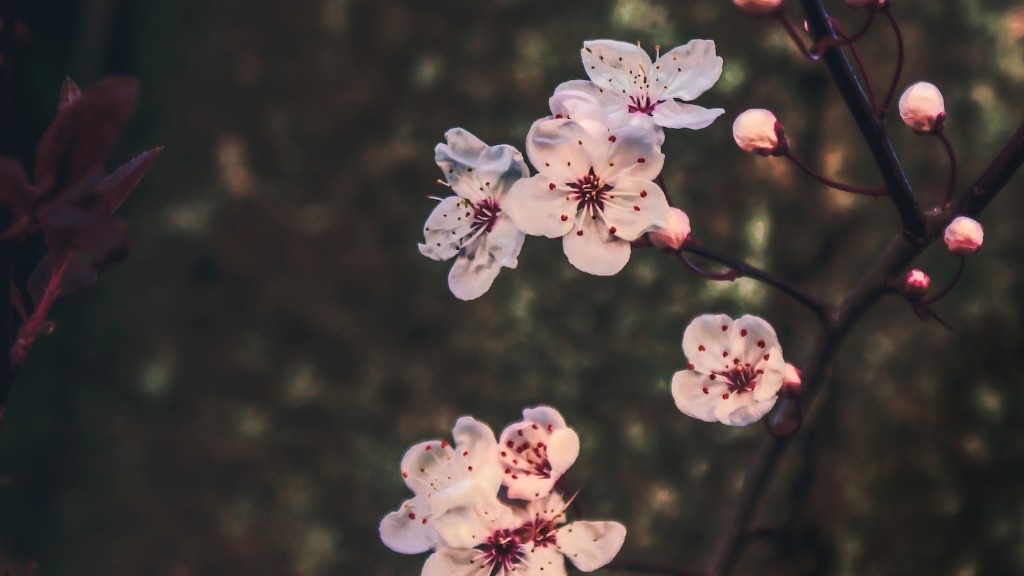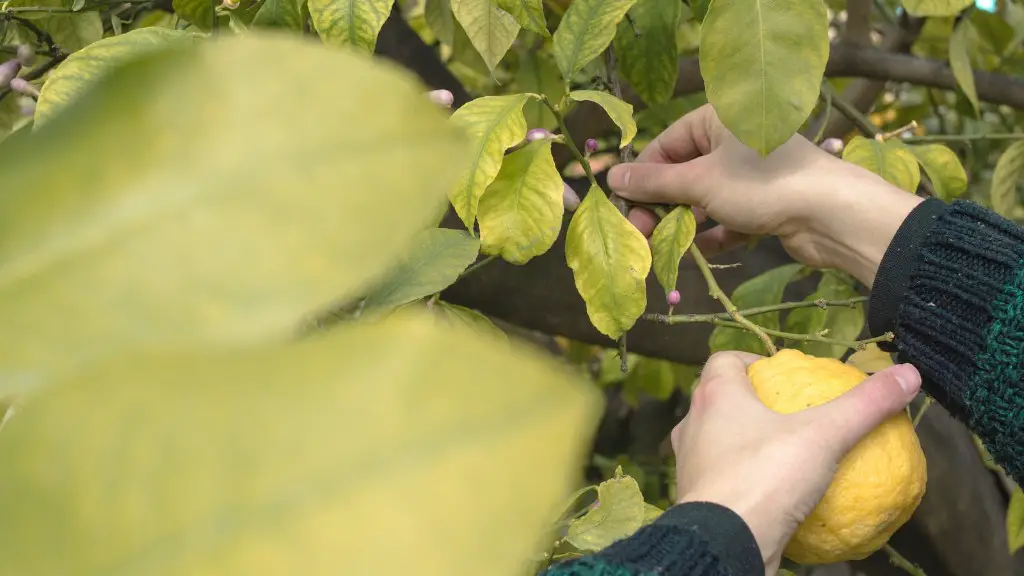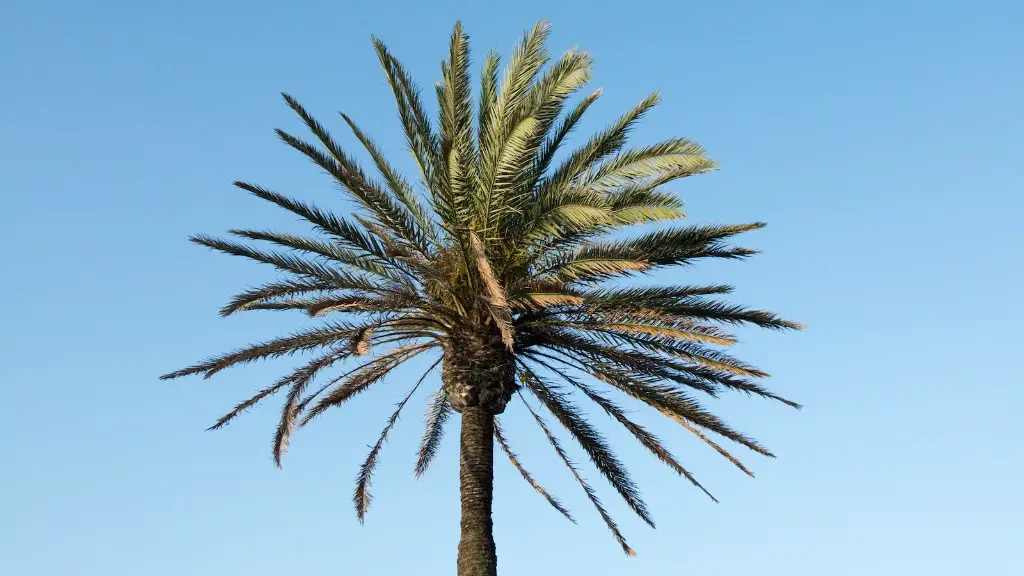Weeping cherry trees, also known as drooping cherries, are some of the most interesting and beautiful trees of all. These ornamental trees produce small lacy green foliage, adding beautiful shape, color and even scent to the landscape. But how big does a dwarf weeping cherry tree get, and is it suitable for growing in a home garden?
While traditional cherry trees can grow to a height of more than 20 feet, dwarf weeping cherry trees typically remain much more compact, reaching only 8 to 10 feet in height and spread. This makes them a great choice for places with limited space, or for those looking for a smaller specimen tree. In comparison, the traditional cherry tree can reach heights of up to 25 or even 30 feet, depending on species, making them unsuitable for small spaces or home gardens.
In terms of width, a mature dwarf weeping cherry tree has a canopy spread of about 8 to 10 feet, depending on the species. However, it is important to remember that the tree can take up to 8 years to reach full maturity, and during this time the width can be much less. Typically, the tree grows slowly at first and then reaches a faster rate of growth as it matures.
When it comes to planting, dwarf weeping cherry trees are an easy option for those looking to quickly add some color and beauty to their garden. Unlike traditional cherry trees, which need to be planted at least 10 or 15 feet apart, dwarf varieties can be planted much closer together. This makes them a perfect choice for creating a cluster of dwarf trees in even a small garden space.
It is important to note that while dwarf weeping cherry trees have a compact size, they are just as susceptible to water, frost, wind and sun extremes as larger varieties. Therefore, in order to maximize their growth potential, it is important to provide them with the right growing conditions. This means providing the tree with plenty of sunlight and the right amount of water and nutrients. Additionally, for cold climates, it is important to ensure that the tree is sufficiently insulated from the winter chill.
In conclusion, dwarf weeping cherry trees are a great option for those looking for a smaller cherry tree to add to their garden. With their beautiful lacy foliage and small size, these trees can make a great addition to any landscape. Furthermore, with the right amount of sunlight, water and nutrients, and by providing adequate protection from the winter weather, your dwarf cherry tree can grow to its full potential.
Caring For Dwarf Weeping Cherry Trees
Caring for a dwarf weeping cherry tree can be a rewarding experience, but it is important to understand the specifics of caring for these trees in order to ensure that they grow to their full potential. Firstly, it is important to plant the tree in well-drained soil, preferably with a neutral pH of around 6.5-7. If the soil is too sandy or too clay-like, then it is important to add organic compost or manure to improve the quality of the soil.
When watering, it is important to ensure that the tree receives an adequate amount of water to keep it healthy. As a general rule of thumb, it is best to provide at least 1 inch of water per week. It is also important to fertilize the soil regularly, at least once per month, with an organic fertilizer containing high levels of nitrogen.
Finally, it is important to prune the tree in order to maintain its shape and remove dead or dying branches. Pruning should be done in the early spring, after the tree has gone through dormancy. Pruning can also be beneficial for increasing the amount of flowers that the tree produces.
Harvesting Dwarf Weeping Cherry Trees
If the dwarf weeping cherry tree is producing fruit, then it may be possible to harvest it for use in jams, jellies and other foods. Dwarf weeping cherry trees typically produce fruit in the late spring and early summer months, and the fruit should be left to fully ripen on the tree before harvesting. It is also important to note that dwarf cherry trees produce much less fruit than larger varieties, so this should be taken into consideration when harvesting.
Harvesting fruit from dwarf weeping cherry trees is a relatively easy process. Firstly, it is important to familiarize oneself with the various cherry varieties, as different varieties have different sizes, colors and flavors. Secondly, it is important to monitor the tree closely in order to determine when the fruit is ready for harvesting. Finally, when ready, the fruit can be simply collected off the tree or with the use of a ladder.
In conclusion, harvesting dwarf weeping cherry trees can be an enjoyable and rewarding experience. With the right variety, sufficient monitoring and careful harvesting, it is possible to enjoy the delicious fruits of the tree for months to come.
Ornamental Uses Of Dwarf Weeping Cherry Trees
In addition to their edible fruit, dwarf weeping cherry trees also offer an array of ornamental uses. These trees are highly prized for their lacy foliage and showy blooms, making them an ideal choice for adding some beauty to a garden or landscaping project. They also make great focal points in any landscape, as their unique form adds an interesting element to the landscape.
These trees are commonly used as a privacy screen as they are able to achieve a certain level of density when planted closely together. Furthermore, they can be used to create stunning hedgerows, topiary style trees, or to create a living fence. The trees are also suitable for planting near a patio or pool, as their lacy foliage will add beauty and color to the area.
Finally, these trees can also be used to provide shade, as their canopy develops over time. Although their size is relatively small in comparison to other trees, their form can provide a comfortable shade that is ideal for outdoor activities. With their cascading branches, they can also make a great addition to any outdoor seating area.
In conclusion, dwarf weeping cherry trees have a range of uses, both edible and ornamental. With their lacy foliage and showy blooms, they can create a beautiful and unique addition to any garden or landscape. As they are relatively easy to care for, they are a great choice for those looking to add beauty to their outdoor space.
Common Issues With Dwarf Weeping Cherry Trees
Unfortunately, like all trees, dwarf weeping cherry trees can suffer from a range of issues. This can include pests and diseases, as well as abiotic issues such as drought and cold temperatures. Fortunately, most of these issues can be avoided with proper care and maintenance.
One of the most common issues with these trees is pests, such as aphids and scale insects. This can be avoided by providing the tree with proper shade, water and nutrients. Additionally, if the tree is showing signs of infestation, the use of a suitable insecticide can help to control the problem.
Another common issue is diseases, such as root rot or leaf spot. In order to avoid this, it is important to plant the tree in well-draining soil and to ensure that it is provided with an adequate amount of water and nutrients. In addition, it is important to check the tree regularly for signs of disease and to act quickly to treat it.
Finally, abiotic issues can also be a problem with these trees, such as drought and cold temperatures. In order to avoid these issues, it is important to take preventative measures, such as using mulch around the tree and providing adequate insulation if planting in a cold climate. Additionally, it is important to provide the tree with the right amount of water and nutrients.
In conclusion, dwarf weeping cherry trees can be subject to a range of issues, but these can usually be avoided with proper care. By providing the tree with the right amount of sunlight, water and nutrients, and by taking measures to avoid pests and disease, it is possible to ensure that your dwarf weeping cherry tree grows to its full potential.
Additional Tips For Growing Dwarf Weeping Cherry Trees
In addition to providing the tree with the right growing conditions, there are a few additional tips that can help to ensure that your dwarf weeping cherry tree grows to its full potential.
Firstly, it is important to choose the right location. As these trees prefer a sheltered spot where they can receive plenty of sunlight, it is important to choose a spot in the garden that meets these requirements. Additionally, it is important to bear in mind that these trees can be prone to frost and wind damage, so it is best to choose a spot away from any exposed areas.
Secondly, when planting, it is important to ensure that the tree is planted at the correct depth. If the tree is planted too deeply, it can cause the tree to rot. Planting it too shallowly, on the other hand, can cause the tree to dry out quickly. As a general rule of thumb, it is best to plant the tree so that the root crown is just above soil level.
Finally, it is important to regularly prune the tree in order to maintain its shape and promote growth. Pruning should be done in the early spring and then again in the late summer or early fall. Pruning can also help to reduce the risk of pests and diseases by removing dead or dying branches.
In conclusion, while caring for a dwarf weeping cherry tree may require a little extra care and attention, with the right knowledge and tools it is possible to ensure that the tree grows to its full potential. Following the tips above will help to ensure that your dwarf weeping cherry tree remains healthy and beautiful for years to come.




